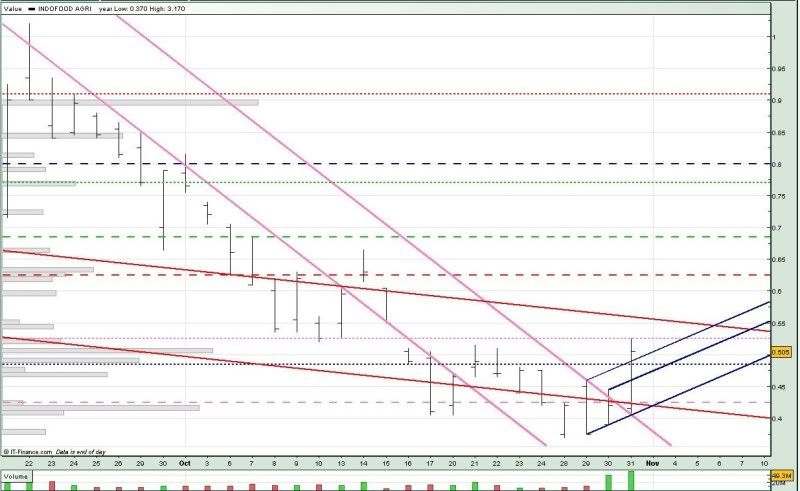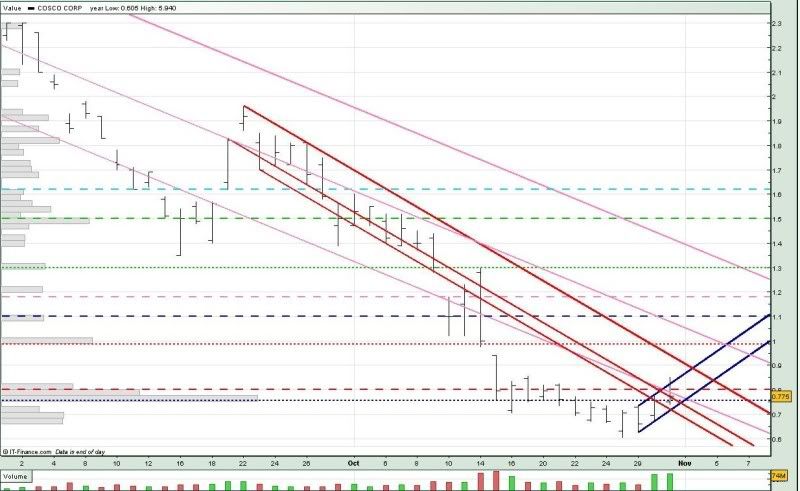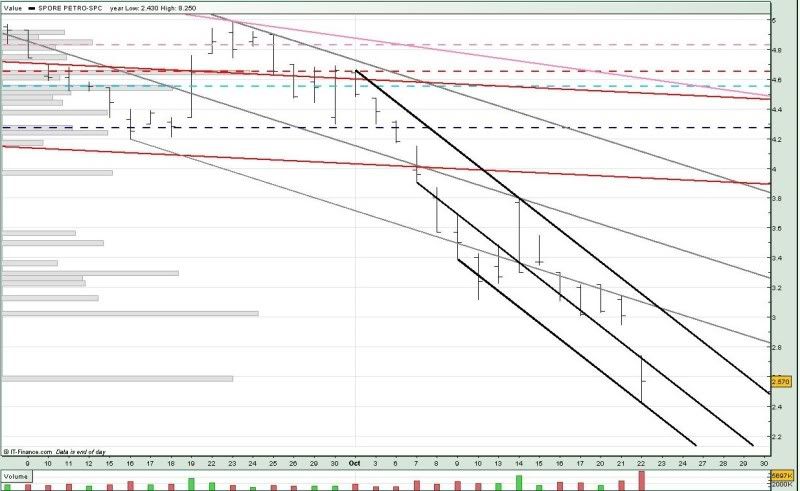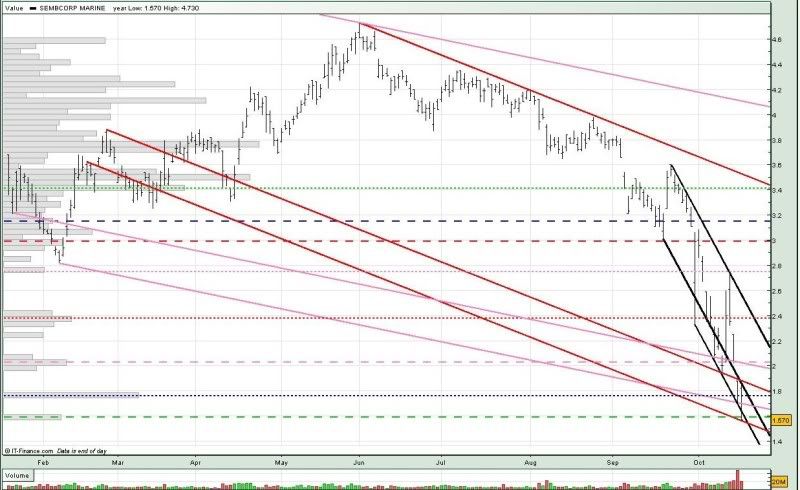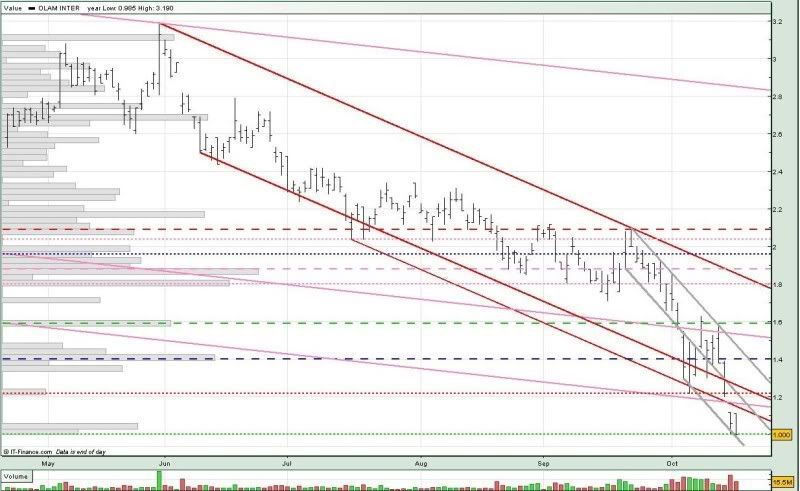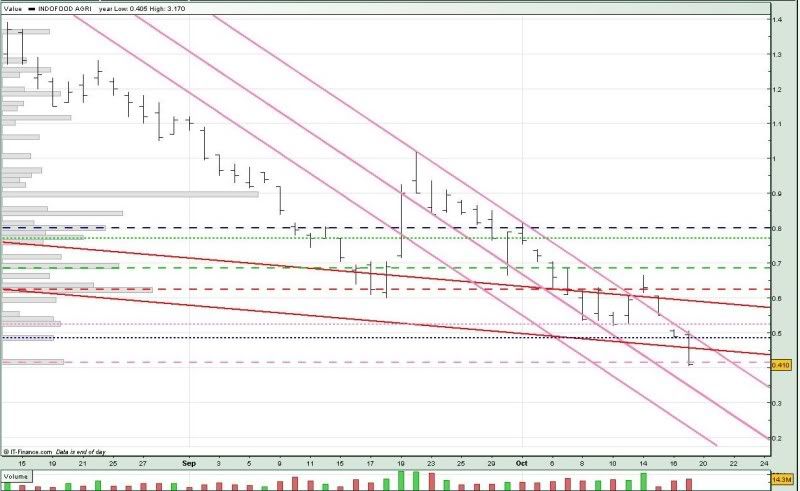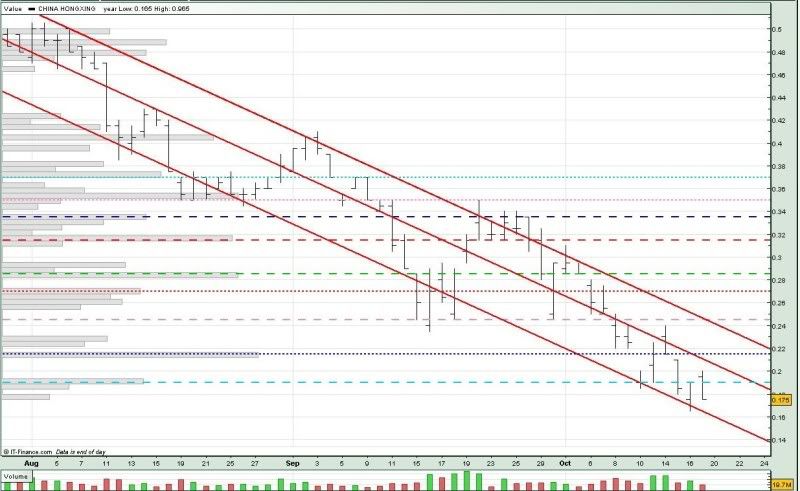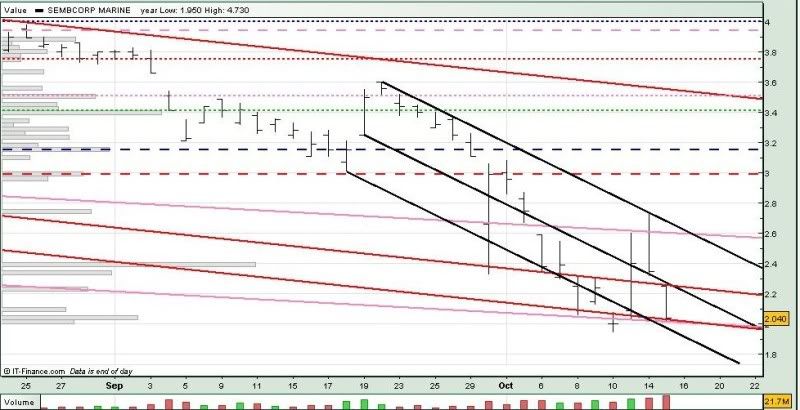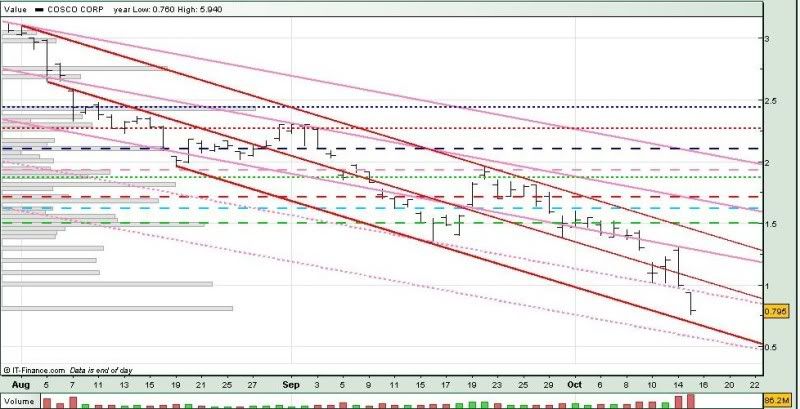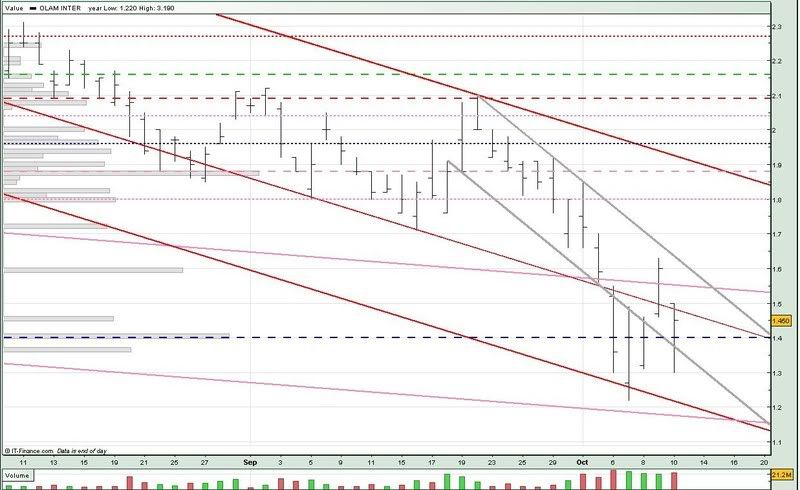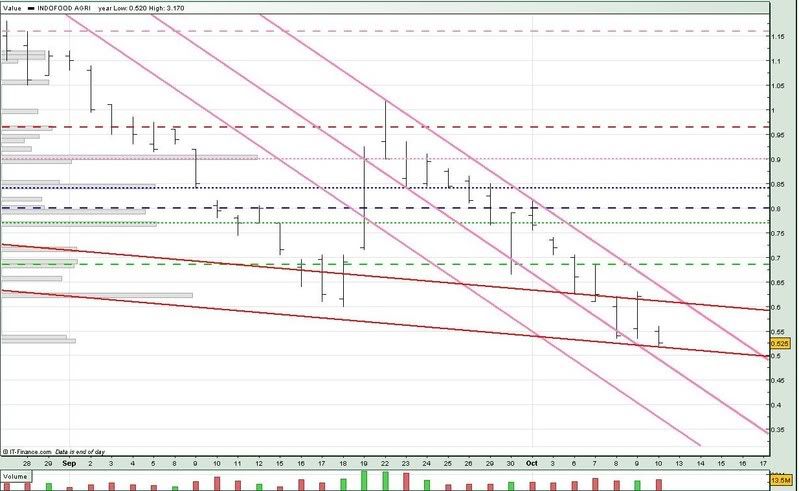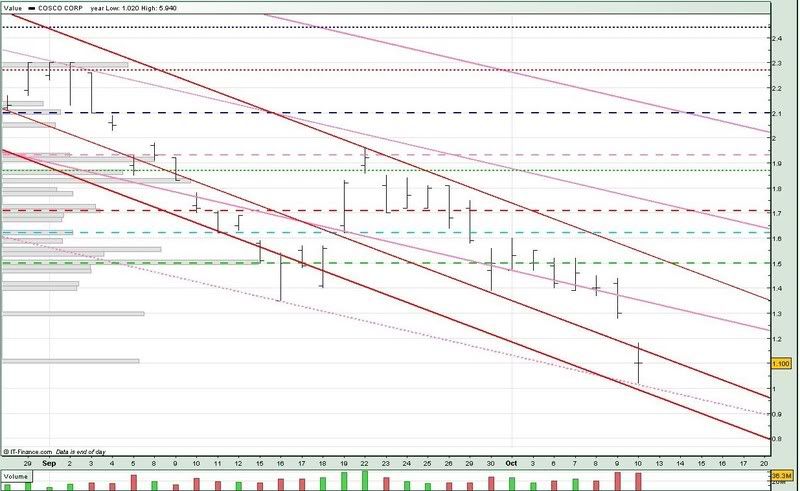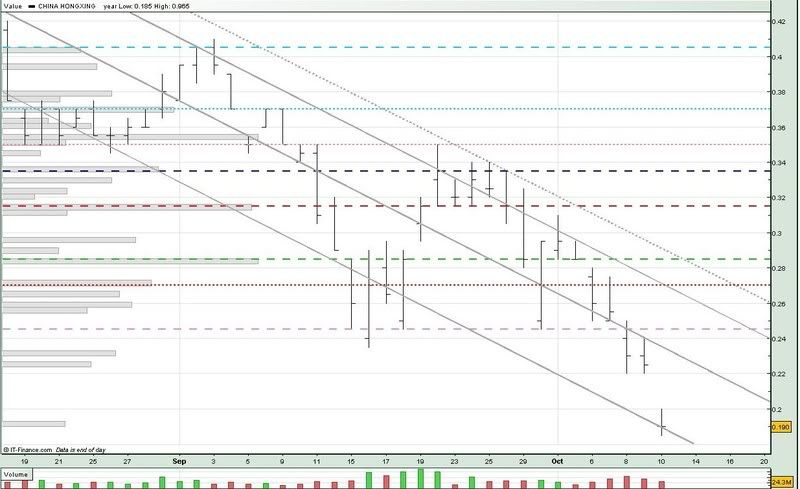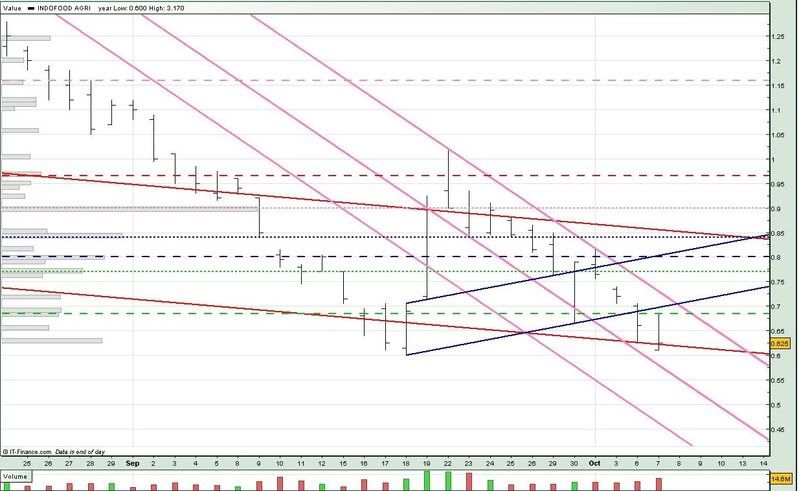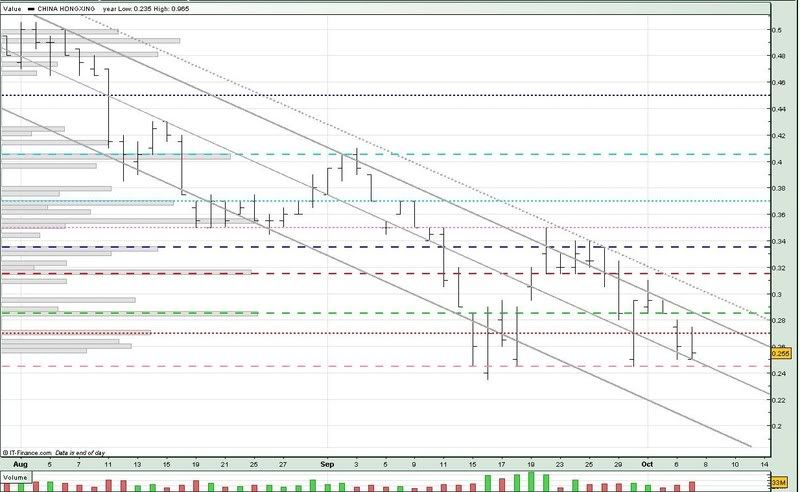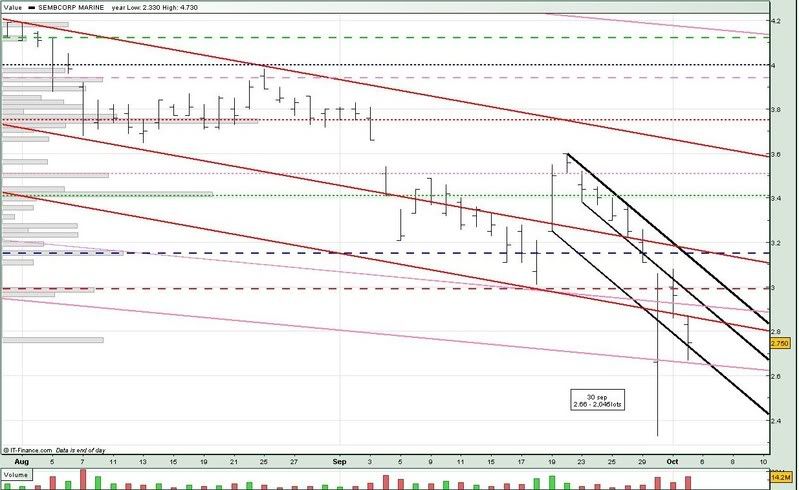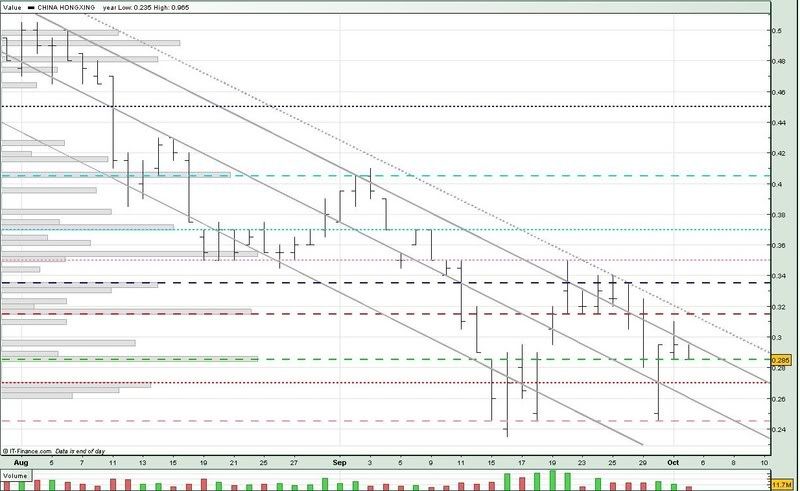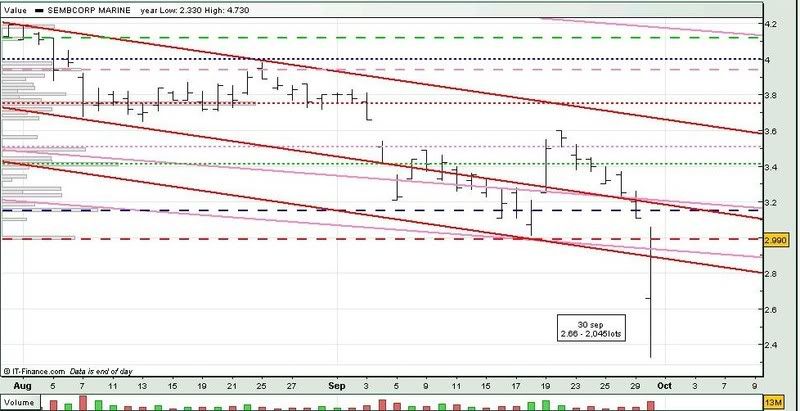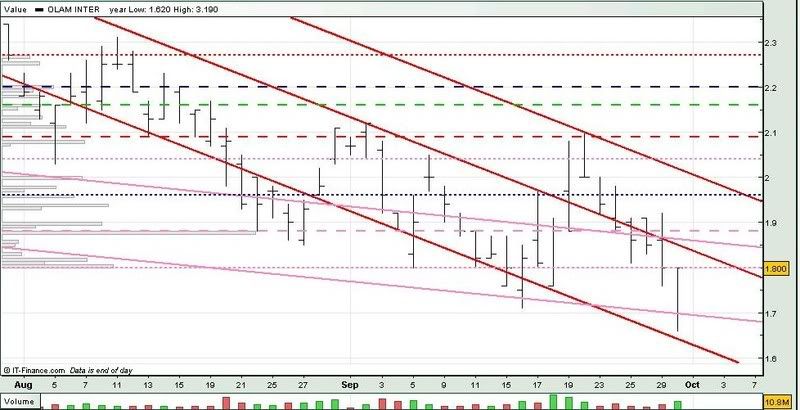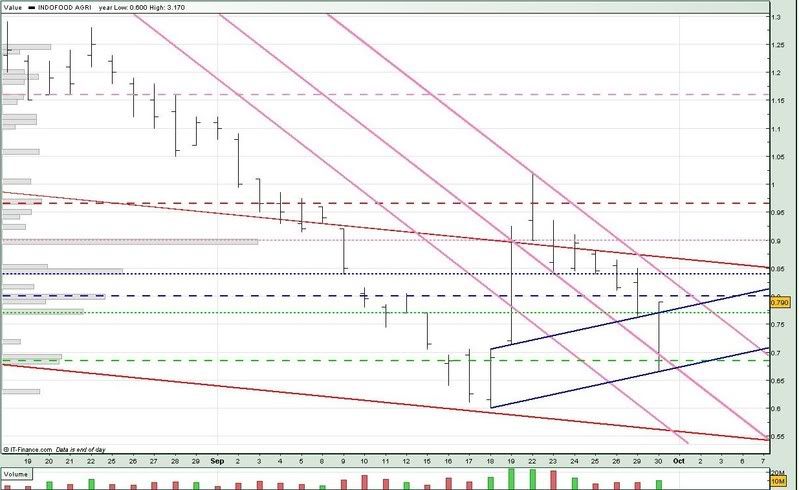by WONG WEI KONG (16 Oct)COSCO Corp Singapore truly became a penny stock yesterday, with another tumble in its share price in what was an acute crisis of confidence.
The stock fell 20.5 per cent or 20.5 cents to 79.5 cents yesterday - this coming after it crashed almost 17 per cent on Tuesday.
That slide will likely be checked, now that Cosco has come out to address some of the concerns the market had over the company.
But the question remains why the company waited so long to clear the air, and did so only after it was queried by the Singapore Exchange.
Tuesday's fall was attributed to a downgrade in Cosco's target price by Credit Suisse to 55 cents from $1.20, with an 'underperform' rating. Credit Suisse said in a report that it expects Cosco shares to drift lower on concerns over shipbuilding demand, risk of order cancellations and delivery delays.
The view that the current credit condition could squeeze demand for new shipbuilding and lead to order cancellations by clients hit by tighter credit lines is one that was widely held, especially after news of Cosco's Norwegian client MPF filing for bankruptcy.
Cosco declined, however, to address these issues when presented with the chance on Tuesday, when the media asked the company to comment on the market's concerns. It was an opportunity missed, and one with costly consequences for its shareholders. Not surprisingly, given the lack of any assurances from the company, the stock continued its slide yesterday on heavy volumes, as more joined in the downgrades.
Why was it so difficult for Cosco to provide timely assurances to the market? Other companies had provided updates and assurances on their businesses when there was a need to. When the tainted milk scandal broke out in China, Chinese food-related companies here issued statements to tell investors what the impact, if any, was on their operations. Similarly, when the Sichuan earthquake took place, listed companies with operations in the region all issued statements to update shareholders. So too when hurricanes struck the US.
In sharp contrast, FSL Trust Management Pte Ltd, the trustee-manager of First Ship Lease Trust (FSL Trust), took the initiative to assure investors after its units also fell in heavy trade. It said yesterday that FSL Trust continues to receive steady lease rental payments from its eight lessees, has a robust set of risk management protocols and is in regular dialogue with its lessees with regard to their credit-worthiness, and reaffirmed its earlier distribution per unit guidance.
Cosco's reticence is all the more surprising given that the lack of communication from the company was cited as a key factor for the market's loss in confidence. Said Credit Suisse in its report: 'Inadequate disclosure on dry bulk newbuild schedule and no announcements on successful delivery of dry bulk vessel to customer to-date (against 10 planned deliveries in 2008 and 41 vessels in 2009) heighten our concerns on execution risk.'
There was clearly an information gap regarding Cosco. As one investor noted in an email to BT, CIMB also made a call on Cosco on Tuesday, the same day Credit Suisse issued its downgrade. But the two calls were poles apart. In opposition to Credit Suisse, CIMB said: 'Key catalysts for Cosco include better-than-expected offshore and conversion orders coupled with falling steel prices. We maintain a 'buy' call with a target price of $2.89.'
The sharply contrasting calls indicated that Cosco had given little guidance to the market, leaving analysts to make their best or worst assumptions. The company's silence simply fanned speculation that bad news may lie just around the corner.
Cosco's statement last night may arrest the fall in its share price. But it may have come too late. Two days of fear-driven selling have destroyed a huge chunk of shareholder value, and more importantly, shattered trust in the company.
Rebuilding credibility may prove a major challenge for Cosco.
-Research Report by WONG WEI KONG (16 Oct)
